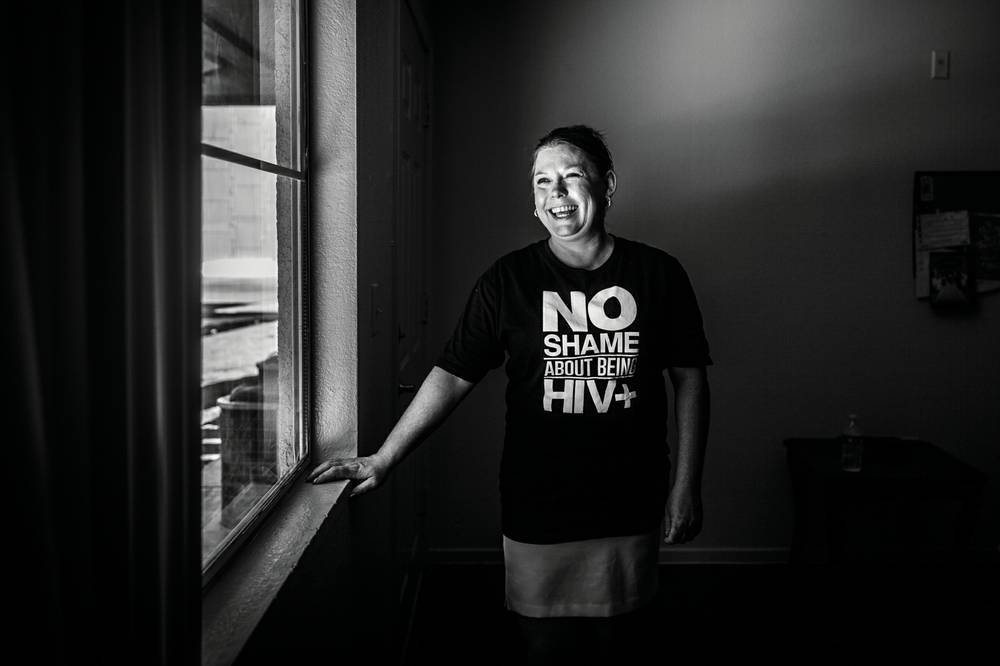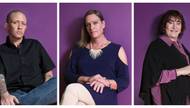Connie Rose sits in Aid for AIDS of Nevada executive director Antioco Carrillo’s office. She’s wearing an olive-colored T-shirt that says, “Use your voice. Tell everyone HIV still exists.” It’s not the only item in her wardrobe that takes a stand. Rose produces a black tee from a bag seconds later that reads: “No shame about being HIV+.”
“I think I’ll wear this to Black & White,” she says.
“Go for it,” Carrillo responds, sitting nearby with a smile.
Rose’s choice of party wear might seem peculiar, given the chic and flamboyant ensembles for which AFAN’s summertime gala and fundraiser is known. But Rose is an outspoken HIV/AIDS advocate. She’s also an active AFAN client, and in the past, she’s gone to Black & White as a volunteer. This year, she’s an invitee, and she’ll be celebrating the party’s 30th edition alongside fellow clients, performing and attending public figures and AFAN supporters and donors. As Black & White continues to evolve—it began in 1986 as an intimate birthday party—so will Rose’s participation at the affair. Instead of assisting the organization that has given her a new lease on life, she’ll be reveling in its successes—especially since she’s one of them.
“AFAN gives life to people, keeping them alive and healthy,” AFAN director of events Garrett Pattiani says. “But what about experiences for that life?”
*****
For many of AFAN’s 1,100 active clients, attending a swanky party is low on their priority list. AFAN is not only an advocacy group for those who have HIV/AIDS, it’s also a support organization for those affected by it. Emergency funds for housing and utility bills are among the most requested client services, Carrillo says. They are made possible in part from money raised at Black & White. But they aren’t just handouts, as Rose can attest.
Before she fled Indiana with her daughter more than three years ago, Rose owned her own home. After she arrived in Las Vegas—in poor health and on disability due to carbon monoxide poisoning—Rose checked into a Budget Suites. Rent and bills would leave her and her daughter with $18 for the month. Needing help, she looked up AIDS service organizations in the area and found one, AFAN, which quickly helped her with housing and legal aid, pointed her to where she could get food and medicine and even paid for her transportation costs (another crucial service for AFAN clients). Over time, she became less reliant on assistance and better equipped to focus on other aspects of her life.
“The hope right now is that if someone is [HIV] positive, nothing will change—only that you’ll adapt to having HIV and that you’ll be accessing medical care,” Carrillo says. “We want you to work and be as independent as you have always been, and you’ll live your life at its full potential. That is essentially what we want to be able to do.”
Fast-forward to today, and Rose now writes professionally for ticketing websites, as a freelancer for HIV/AIDS magazines and for her blog, livingpos.com, as part of her advocacy efforts.
“When I say [AFAN] helped me to where I could stay here, they provided us with resources I needed to where I could get on my feet and find the stability where I could begin to thrive,” Rose says. “Once I founded and developed my website, it allowed me to write for [AIDS magazine] A&U and be on TV three times. I’m a writer, and there’s no words for how much AFAN has helped me.”
*****
The circumstances bringing John Miles to AFAN differ radically from those of Rose. After spending five years in a Chicago VA hospital after being hit by a car, Miles contracted HIV from a blood transfusion in 2004. Determined to get healthy and in search of somewhere warmer, he moved to Las Vegas. After some initial struggles, Miles was referred to AFAN, which saved him from homelessness and the clutches of the payday loan industry. That wasn’t his only breakthrough.
“We’ve got a person that used to belong to AFAN, Jim Foley,” Miles says. “I call him my hero. He is awesome. I was in heavy, dark place. He made that dark place crack open, one sliver at a time, until it was wide open. I said, ‘Whoa! Really—I can be me again?’ It was the words he said, and I was alive again.”
Now, the only client service Miles requests is a bus pass. It’s how he gets to various clinics and health facilities. It’s his link to the local HIV/AIDS community, with which he interacts through several support groups. And it’s how he attends the meetings of the Ryan White Planning Council, which (along with the Health Resources and Services Administration) helps allocate federal funds for those living with HIV/AIDS but lack sufficient health care, and which he has advised for the past four years as a representative of the public. Like Rose, Miles has found a greater purpose in life aligning with and advocating for the HIV/AIDS community.
And like Rose, Miles finds himself within a unique constituency of those living with HIV—they’re both heterosexual. Though stereotypes labeling HIV/AIDS as a gay disease persist, those who are straight and positive still deal with ridicule. Miles combats this by being out—and engaging with fellow HIV positive heterosexuals who aren’t. “It’s the stigma—a different stigma,” he says. “I try to put it out there that, ‘Hey, I’ve got it.’” He even wears a bracelet that reveals his status.
It might as well say “No shame about being HIV+,” too.









